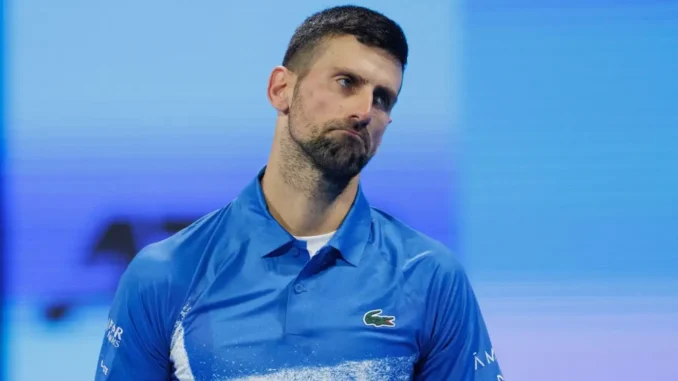
The narrative surrounding a tennis titan, a figure whose name has become synonymous with unwavering dominance, took a somber turn. Whispers of vulnerability, fueled by recent injury struggles, began to circulate, casting a shadow over his seemingly impenetrable aura. The air crackled with a sense of unease, a feeling that perhaps, just perhaps, the inevitable march of time was beginning to take its toll.
The champion, a player whose career had been defined by relentless pursuit of perfection, had recently faced setbacks, hindering his ability to maintain his customary level of play. These physical challenges, once viewed as mere blips on the radar, now seemed to carry a weight of greater significance. The question, once unthinkable, now hung heavy in the air: could this be the beginning of the end?
“He’s not invincible,” a former player observed, his words echoing the sentiments of many. “The body can only take so much. Even the greatest champions eventually have to confront their limitations.” This acknowledgment of human fallibility, of the inherent fragility of even the most finely tuned athletic machine, served as a stark reminder that no player, regardless of their achievements, is immune to the ravages of time.
The recent injury struggles, it was argued, were not simply isolated incidents. They were seen by some as symptoms of a larger decline, a gradual erosion of the physical capabilities that had once propelled the champion to unprecedented heights. The concern was not merely about the immediate impact on his performance, but about the long-term implications for his career.
“It’s a ‘tennis death’ warning,” a commentator stated, his words carrying a sense of dramatic urgency. “These injuries are a sign that his body is starting to break down. He needs to be careful, or he could risk permanent damage.” This stark assessment, while perhaps overly dramatic, captured the underlying anxiety that permeated the tennis community.
The champion’s ability to recover from setbacks had always been a hallmark of his career. His mental fortitude, his unwavering belief in his own abilities, and his meticulous approach to training had allowed him to overcome numerous challenges. However, the current situation seemed different, more profound.
“He’s always been a fighter,” a former rival acknowledged, emphasizing the champion’s resilience. “But even the toughest fighters can’t win every battle. He’s going to have to make some tough decisions.” This recognition of the champion’s fighting spirit was tempered by a sense of realism, a recognition that even the most formidable competitors must eventually confront their limitations.
The debate surrounding the champion’s future extended beyond the physical aspects of the game. Questions arose about his mental state, his motivation, and his ability to maintain the unwavering focus that had been so crucial to his success. The concern was not merely about his ability to win matches, but about his ability to sustain the relentless grind of professional tennis.
“He’s achieved everything there is to achieve,” a tennis analyst observed, highlighting the potential for waning motivation. “Does he still have the same fire? Does he still have the same hunger?” These questions, while difficult to answer, were central to the discussion surrounding the champion’s future.
The champion’s recent struggles also sparked a broader discussion about the changing landscape of professional tennis. The emergence of a new generation of players, younger and more athletic, posed a significant challenge to the established order. The concern was not merely about the champion’s ability to compete with these players, but about his ability to maintain his dominance in a rapidly evolving sport.
“The game is changing,” a former coach noted, emphasizing the need for adaptation. “The younger players are faster, stronger, and more aggressive. The champion needs to adapt, or he’ll be left behind.” This call for adaptation, for a willingness to evolve, was a recurring theme in the discussion surrounding the champion’s future.
The conversations around the player’s recent issues brought up the topic of longevity in sports. The sheer number of matches, and tournaments, that the player has competed in, has taken a toll on his body. The player’s dedication to fitness, and his meticulous diet, has allowed him to play at a high level for a long period of time, but even the best athletes reach a point where their bodies begin to show signs of wear and tear.
The player has always been known for his mental strength, and his ability to stay focused under pressure. However, the recent injury struggles may have taken a toll on his mental state. The player will need to find a way to stay motivated, and to keep his focus, if he wants to continue to compete at the highest level.
The discussion surrounding the champion’s future was not merely about his ability to win matches; it was about his ability to maintain his legacy, to preserve his status as one of the greatest players of all time. The concern was not merely about his physical decline, but about the potential for his legacy to be tarnished. The player’s legacy is already secured, but the way he ends his career will be a large part of his story.
The player’s journey, and the challenges he currently faces, highlight the delicate balance between physical prowess and mental fortitude. The player’s ability to find that balance will determine his future.
Leave a Reply